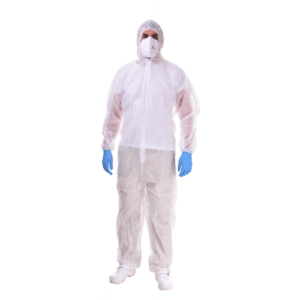Filtration efficacy
Our filtering face piece respirators can be used for respiratory protection against variousnon-oily airborne contaminants. It is extremely effective (99%) against tiny particulate matter of less than 0.3 and 2.5 microns in diameter (PM0.3 and PM2.5 respectively) among which are many infectious agents. For the purpose of protecting yourself from influenza viruses (SARS, avian flu, coronavirus, etc.), respirator masks were recommended as part of the PPE by the World Health Organization (WHO).
100% compliant with regulations (CE, FDA, EN 149:2001+A1:2009)
Our FFP3 respirators have been confirmed to meet all of the performance requirements set by the European Standard EN 149:2001+A1:2009. They are also completely CE-certified and FDA-cleared. Please note that if you need reassurance regarding the certification of our products, we are willing to send you the copies of the relevant documents upon request!
Non-reusable (NR)
In order for your FFP3 particulate respirator to effectively protect you from the particulate matter you should wear it for a maximum of four to five hours. Please do not share your mask with other people. If your respirator mask becomes damaged or dirty, throw it away. Please follow our instructions for proper user seal checks before each use.
Decide for yourself!
Vannin Healthcare Global is one of the rare suppliers who let you choose your FFP3 mask’s design at no additional cost. If you’re indifferent about the design of your respirator or just want to surprise your future self, feel free to skip this step.
Choose the design: Cupped or Folded
Moulded or cupped masks were made with your physiognomy in mind. They were designed to better fit your face, firmly preventing leakage. However, they might be impractical if you want to carry them in your pocket. Remember: if your mask gets damaged it’s best to just throw it away!
Folded masks, on the other hand, you can easily carry around in your pocket or your purse. Convenient as they are, they might be the right choice to have on you at all times. Just store them in a clean plastic bag and you’re good to go! But be careful to put them on tightly and not leave any gaps between your face and the mask.
I want the folded FFP3 respirator mask!
The purpose of the valve on respiratory protective masks is to lessen the breathing resistance which is higher compared to other non-respirator masksfor safety reasons. The wearing of your respiratory protective mask becomes more comfortable, as there is less moisture build-up. However, if you suspect you have been infected, wearing an unvalved respirator is advised. Otherwise you risk exposing other people to virus particles.
I want the non-valved FFP3 respirator mask!
Non-valved FFP3 masks offer a two-way protection. Our respirator masks will be effective whether your goal is to avoid inhaling the virions, or avoid spreading the virus to people close to you. A mask without a valve is also less bulky, being a more lightweight solution.
- I want the non-valved FFP3 respirator mask!
[User Seal Check]
Before entering a possibly contaminated area, you need to properly put on your filtering face piece. To do this you need to:
- Take the mask in one hand so that the nose clip is turned upwards.
- Place the bottom of the mask against your chin, while using your other hand to pull both straps over your head. The bottom strap should go below your ears over your neck. The top strap should go high on your head, above the ears.
- Adjust the mask carefully against your face, not allowing for any gaps between the mask and your face.
- Adjust the nose clip with both handsto ensure the nose clip is firmly tightened. Pinching it with just one hand is not advised as it might affect the tightness of the mask.
- Finally, check if you completed all of the steps correctly by putting both of your hands over the mask so as to not affect its position, and then quickly exhale. Depending on where you fill the air passing, adjust the nose clip or the entire mask accordingly, following the aforementioned steps. If there are no gaps for the air to pass through, you have correctly put on the mask.
https://www.who.int







